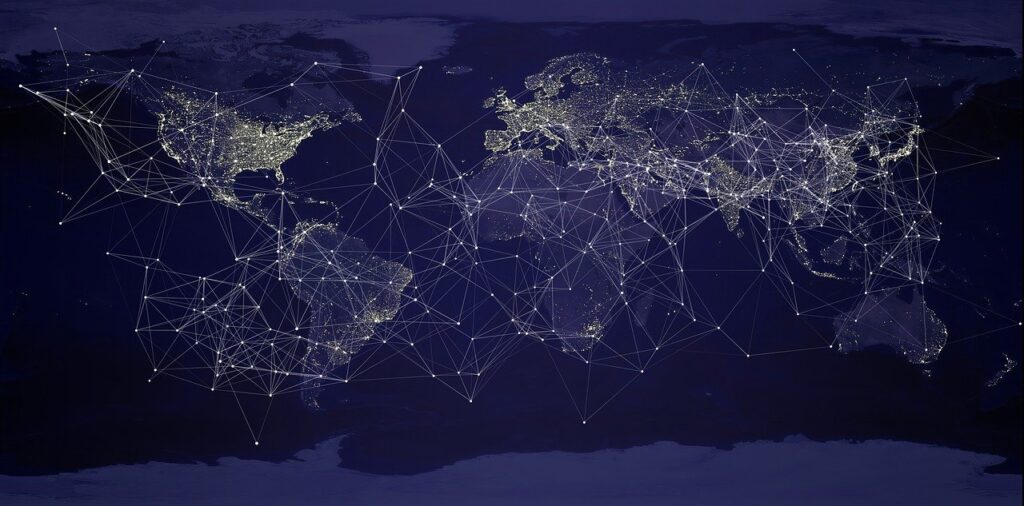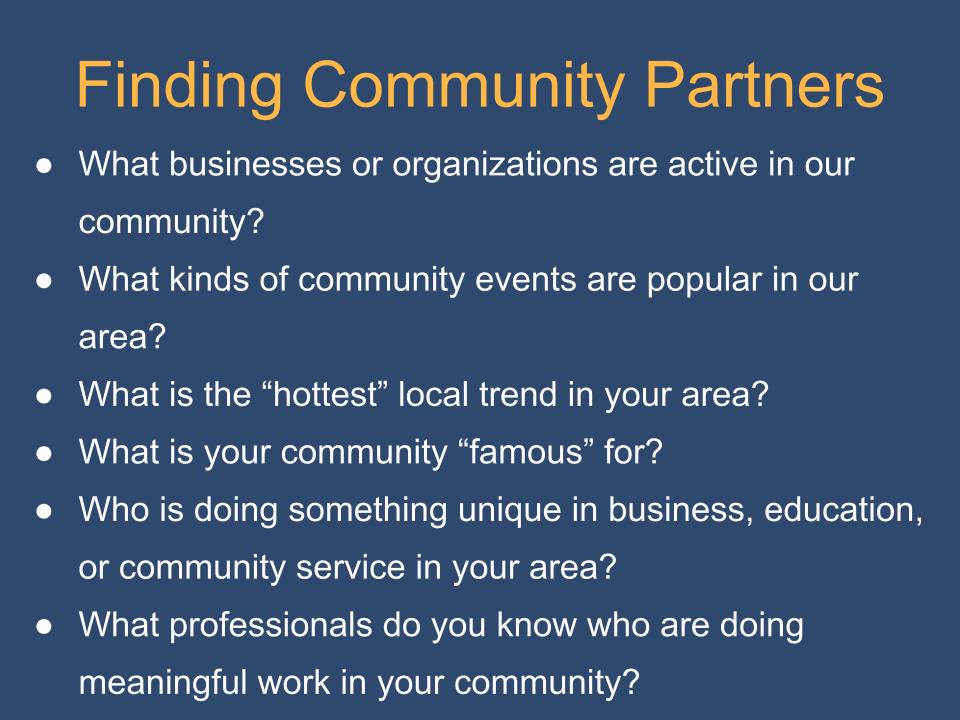
This has been a year like no other, and this summer teachers need to first take care of themselves and then prepare for next year. This is the fifth of a series of posts about how to plan for SEL and PBL as we hopefully return to face-to-face learning this fall.
Summer is a glorious time to rest with your family and reflect on last year. As we head toward school reopening PBL is the answer to how to address the diverse needs of students after this trying year. First you have made some big picture plans of your scope and sequence for projects, and now is an excellent time to build your network connections for community partnerships.
Community Network
We are not talking about your PLN (Personal Learning Network–Does anyone still use that term?) Anyway this is not about connecting with other teachers or trying to become edu-famous. PBL teachers need to network with their local community. Designing projects that are seated in local issues and people is key to making your content authentic. Reach out to businesses, non-profits, higher ed institutions, and experts in fields that cross over into your content standards.
Look at the projects that you have done in the past and consider who in your community could connect with the project. What professionals or careers correspond to your content standards? What experts could help you launch a project or critique a final product? Start making a list of all the possible people who might help. Consider friends and family. Ask your co-workers who they know in specific fields of work. Leave no stone unturned.
Community connections are the key to taking PBL to a higher level by making the work authentic.
Another idea is to join some local groups in real life or on Facebook related to your content. You could join a geology club to connect to earth science or attend functions at the public museum to meet people passionate about local history. Nowadays there are groups for just about anything that you can think of. Don’t be afraid to move beyond local connections to national or world experts. Due to Covid, everyone knows how to use video conferencing. It’s actually easier than ever to connect with people from anywhere. Aim big, the worse that can happen is you either get ignored or politely declined. Then you can ask someone else with the same expertise.
How to Make a Cold Call
Summer is a great time to make a call or send an email to ask businesses to partake in your project. If you already have a contact then writing an email or making a phone call is fairly easy. If you know someone who “knows someone” at an organization, have your contact send an introductory email with a brief explanation that you are looking for community partners for a project.
Unlike the business world where social mixers happen all of the time, most educators do not see networking as part of their job. Sometimes you will need to cold call to find the right community partners. To be clear, I do not enjoy doing this. I lean toward the introverted side and am uncomfortable meeting new people. Mixer parties are not my thing. I would rather hang out with a few friends than a large group of people. But I have learned how important community connections are, so I push myself to make them.
After you have determined who you want to cold call, have a specific pitch prepared. Remember that you will only have their attention for a short time so be prepared with short explanation of how you use PBL and a specific request. Ask for a problem that your students could solve for them. Be clear about your expectations and limits. For example, “We need 1 day or 12 total hours of your time.” Give an outline of what they can expect to provide in terms of time commitments, topics, and support. Clarify what they can expect students to give back to them. Let them know that you will not be asking for any money from them, just their time and expertise.
If they agree, then it is your job, not theirs, to figure out how their problem or expertise fits into your curriculum. Create a Driving Question and have your partner deliver it to students during a field work visit, in a recorded video, or during a live video conference. Having students hear about their project directly from the source is powerfully motivating. It also give them an opportunity to ask questions to help define the problem.
The other obvious time that networks is for critiques of the final product presentations. But it can be even more meaningful to have them provide feedback to groups along the way, rather than waiting to the end. They can be mentors to students and expose them to career choices that they may never have considered. When students are truly partnered with adults, they learn not only the content but the SEL skills that are used daily to complete work in a collaborative environment.
During the project, design a plan to advertise the partnership with parents and the local media.
Give them a shoutout in your school’s newsletters and social media. Contact print, TV, and radio news stations to notify them of the project and invite them to view key stages of it. They are looking for local stories to tell, and you are helping them by sharing your students’ work. This is not only great advertising for your business partners and builds up your school’s reputation in the community.
Now is the time to make these connections before you get caught up in the hustle and bustle of the school year.
Interested in more tips on how you can network for authentic PBL? Signup for my newsletter so that you never miss a post. I am booking workshops with schools across the country on PBL and SEL.

